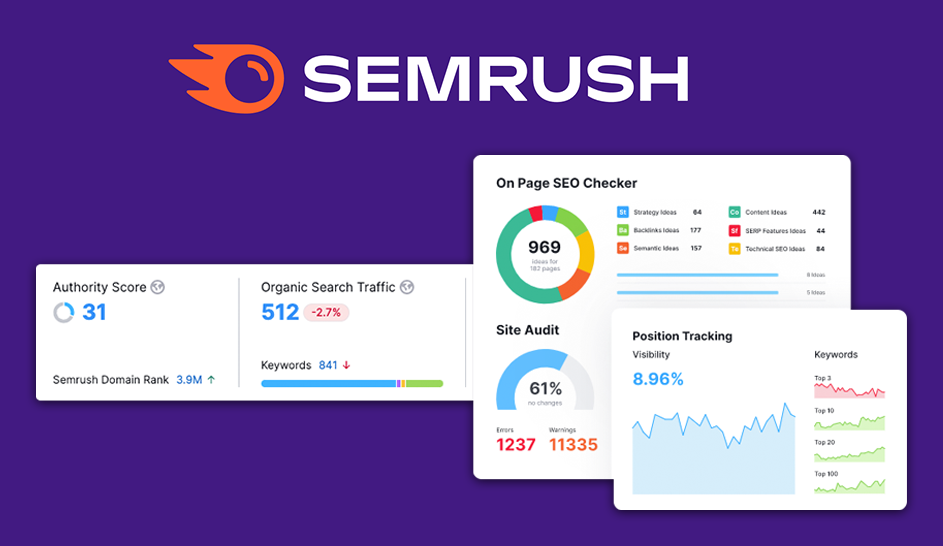Ahrefs is a robust SEO tool that provides a comprehensive set of features to help improve your website’s search engine rankings. This guide is designed for beginners, offering step-by-step instructions and practical examples to maximize your use of Ahrefs for SEO purposes.
Step 1: Create an Ahrefs Account:
Begin by signing up for an Ahrefs account. You can choose from different subscription plans based on your needs. Once registered, log in to the Ahrefs dashboard.
Step 2: Understand the Dashboard:
Explore the Ahrefs dashboard to familiarize yourself with its key sections, including Site Explorer, Keywords Explorer, Site Audit, and more. Each section serves a specific purpose in SEO analysis.
Step 3: Site Explorer – Analyzing Your Website:
- Enter your website URL in the Site Explorer bar.
- Review the Overview section for an overall analysis of your site’s performance, including backlinks, organic traffic, and top-performing pages.
Example:
- Enter “www.yourwebsite.com” in the Site Explorer bar.
- Analyze the Overview section to see backlinks, organic keywords, and estimated organic traffic.
Step 4: Keywords Explorer – Keyword Research:
- Utilize Keywords Explorer to identify relevant keywords for your content.
- Enter a seed keyword to generate a list of related terms, along with search volume, difficulty, and potential traffic.
Example:
- Enter “digital marketing” in Keywords Explorer.
- View the keyword suggestions, search volume, and keyword difficulty.
Step 5: Backlink Analysis:
- Navigate to the Backlink Profile section to analyze your website’s backlinks.
- Identify referring domains, anchor text, and the overall health of your backlink profile.
Example:
- Explore the Backlink Profile section to see referring domains and anchor text distribution.
Step 6: Competitor Analysis:
- Enter your competitors’ URLs in Site Explorer to analyze their strategies.
- Identify their top-performing pages, backlink sources, and keywords.
Example:
- Enter a competitor’s URL in Site Explorer.
- Analyze their top pages, referring domains, and organic keywords.
Step 7: Site Audit – Technical SEO:
- Use the Site Audit tool to identify and fix technical SEO issues.
- Address issues such as broken links, missing meta tags, and slow-loading pages.
Example:
- Run a Site Audit to identify technical SEO issues.
- Address any critical issues affecting your website’s performance.
Step 8: Content Gap Analysis:
- Identify content gaps by comparing your content with competitors.
- Find keywords your competitors rank for but your site does not.
Example:
- Use the Content Gap tool to compare your site with competitors.
- Discover keywords your competitors rank for that you can target.
Step 9: Rank Tracking:
- Set up Rank Tracking to monitor your website’s performance for specific keywords over time.
- Track improvements and identify areas for further optimization.
Example:
- Add target keywords to the Rank Tracking tool.
- Monitor your website’s ranking progress over weeks or months.
Step 10: Utilize Ahrefs Learning Resources:
- Take advantage of Ahrefs’ extensive learning resources, including tutorials, webinars, and blog posts.
- Stay updated on the latest SEO trends and best practices.
Conclusion:
By following these steps and exploring the various features Ahrefs has to offer, you can enhance your SEO efforts and gain valuable insights into your website’s performance. Regularly use Ahrefs to track changes, analyze competitors, and refine your SEO strategy for optimal results.




